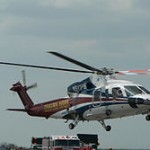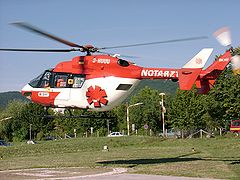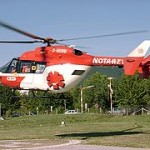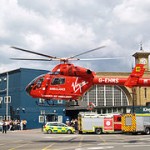Medical control
 The nature of the air operation will frequently determine the type of medical control required. In most cases, the available skill set for an air ambulance staffer is considerably greater than that of a typical paramedic. As a result, those operating in this environment will often be permitted by medical control to exercise more latitude in medical decision-making. Assessment skills tend to be considerably higher, and, particularly on interfacility transfers, permit the inclusion of such factors as the reading of x-rays and the interpretation of lab results. This allows for planning, consultation with supervising physicians, and the issuing of contingency orders in case they are required during the flight. Some systems operate almost entirely off-line, using protocols for almost all procedures and only resorting to on-line medical control when protocols have been exhausted. Some air ambulance operations have full time, on site medical directors with pertinent backgrounds (e.g., emergency medicine); others have medical directors who are only available by pager. For those systems operating on the Franco-German model, the physician is almost always physically present, and medical control is not an issue.
The nature of the air operation will frequently determine the type of medical control required. In most cases, the available skill set for an air ambulance staffer is considerably greater than that of a typical paramedic. As a result, those operating in this environment will often be permitted by medical control to exercise more latitude in medical decision-making. Assessment skills tend to be considerably higher, and, particularly on interfacility transfers, permit the inclusion of such factors as the reading of x-rays and the interpretation of lab results. This allows for planning, consultation with supervising physicians, and the issuing of contingency orders in case they are required during the flight. Some systems operate almost entirely off-line, using protocols for almost all procedures and only resorting to on-line medical control when protocols have been exhausted. Some air ambulance operations have full time, on site medical directors with pertinent backgrounds (e.g., emergency medicine); others have medical directors who are only available by pager. For those systems operating on the Franco-German model, the physician is almost always physically present, and medical control is not an issue.
Equipment and interiors
Most aircraft used as air ambulances, with the exception of charter aircraft and some military aircraft, are equipped for advanced life support and have interiors that reflect this. The challenges in most air ambulance operations, particularly those involving helicopters, are the high ambient noise levels and limited amounts of working space, both of which create significant issues for the provision of ongoing care. While equipment tends to be high-level and very conveniently grouped, it may not be possible perform some assessment procedures, such as chest auscultation, while in flight. In some types of aircraft, the aircraft’s design means that the entire patient will not be physically accessible in flight. Additional issues occur with respect to pressurization of the aircraft. Not all aircraft used as air ambulances in all jurisdictions have pressurized cabins, and those which do typically tend to be pressurized to only 10,000 feet above sea level. These pressure changes require advanced knowledge by flight staff with respect to the specifics of aviation medicine, including changes in physiology and the behaviour of gases.
There are a large variety of helicopter makes that are used for the civilian HEMS models. The commonly used types are the Bell 207, 407, and 429, Eurocopter AS-350, BK-117, EC130, EC135, EC145, and the Agusta Westland 109 & 149. Due to the configuration of the medical crew and patient compartments, these aircraft are normally configured to only transport one patient but some can be configured to transport two patients if so needed. Additionally, helicopters have stricter weather minimums that they can operate in and commonly do not fly at altitudes over 10,000 feet above sea level.
Challenges
Beginning in the 1990s, the number of air ambulance crashes in the United States, mostly involving helicopters, began to climb. By 2005, this number had reached a record high. Crash rates from 2000–2005 more than doubled the previous five year’s rates. To some extent, these numbers had been deemed acceptable, as it was understood that the very nature of air ambulance operations meant that, because a life was at stake, air ambulances would often operate on the very edge of their safety envelopes, going on missions in conditions where no other civilian pilot would fly. As a result, nearly fifty percent of all EMS personnel deaths in the United States occur in air ambulance crashes. In 2006, the United States National Transportation Safety Board (NTSB) concluded that many air ambulances crashes were avoidable, eventually leading to the improvement of government standards and CAMTS accreditation.
Cost-effectiveness
Whilst some air ambulances do have effective methods of funding, in the UK, they remain almost entirely charity funded, as improved cost-benefit ratios are generally achieved with land based attendance and transfers. Health outcomes, for example from London’s Helicopter Emergency Medical Service, remain largely the same for both air and ground based services.


